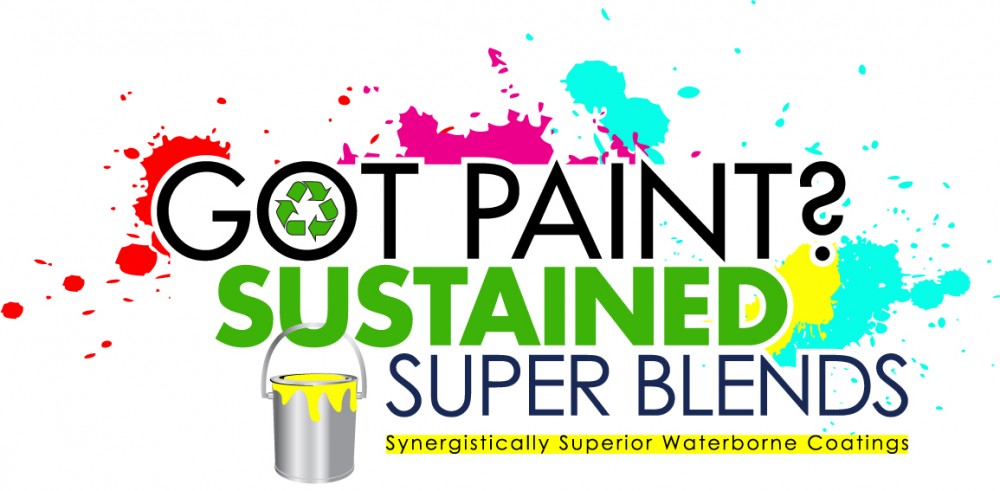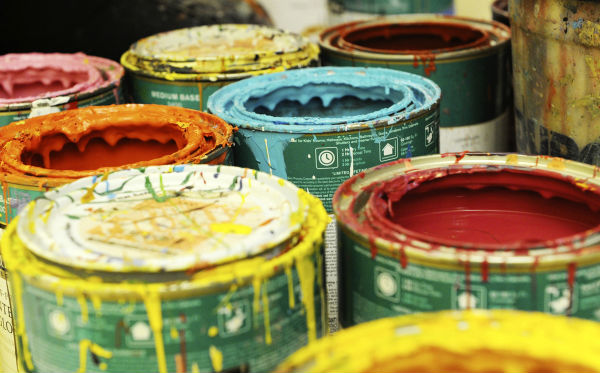FAQ
For quick answers please browse our frequently asked questions.What Say You?
Q: Can I put my paint in the trash can?
A: If it contains any liquid, no. If it’s dry, contact your waste management company for specific requirements. Some companies have you remove the lid to prove that all paint is dry.
Q: Can I mix my paint in a large bucket for you?
A: No, we can not accept paint once it has been mixed with anything, including other paint.
Q: Can’t I just dry my own paint?
A: If there’s a couple inches remaining, yes by all means. But odds have it you have more than that. Keep in mind you’ll spend money for a drying agent, or spend time drying paint inch by inch, not to mention the potential mess attributed with that. Along with restrictions on disposal quantities, there is also that specific date, or calendar window when you’re able to drop off paint, right? Go ahead, pile those gross cans in your vehicle and if you can make the date, spend money for gas getting there. Then spend time with other like minded individuals waiting in line for your turn. That’s always fun. Why bother?, call us! No mess, no prep, no transport, no hassle!
Q: My paint is really old, is that okay?
A: Yes, as long as it has not been mixed with anything, and it’s standard house paint. We do not accept paint with lead or mercury. As of 1992, the EPA banned the use of mercury in the manufacture of latex paint.
The paint may contain PCBs or heavy metals (lead, mercury, cadmium, chromium). Paints that contain mercury are often billed as “anti-fungal” or “mildew-resistant” and the label might list phenylmercury, acetate or succinate as an ingredient. Lead might be listed on the label as litharge, red or white lead or as leaded zinc oxide. In general, paint produced before 1978 contained heavy metals or PCBs, so sorters should look for dates, or learn to identify label styles that indicate older paint.
Q: How do you charge?
A: All fees are based on the size of the container, regardless of how much paint is in the can. Trying to guess with each customer over each can would be a never ending task, so we charge a flat rate based on can size.
Q: Where should I leave my paint cans for pickup?
A: Please leave cans near garage, on driveway, by front walkway, or a nearby visible location. DO NOT LEAVE CANS AT CURBSIDE! DO NOT LEAVE CANS IN ALLEY.
* If you reside in a condominium building, please adhere to instructions set forth by your property manager.
** Paint retrieval instructions for commercial request will be arranged during the scheduling process.
Q: How can I tell if it’s Latex, or oil/alkyd based paint?
A: Paints are generally referred to as being oil based, or water based. If you have trouble determining your paint, check its method for cleanup. Soap & Water indicates that it’s water based, where as mineral spirits, or paint thinner, indicates that it’s oil based.
Also, look at the warning label on the container. If it states anything like, “Flammable, Combustible, Keep away from flames, Vapors may ignite, …” then this is a solvent based paint.
If you are still having trouble determining which type of paint that you have, look for an ingredient list. Typically it will say water or some type of oil. (i.e. Linseed Oil) Alkyd is oil based.
Behr does have a product that looks like it’s oil based, it says, “Oil Penetrating Formula” and then right below it says, “Easy Water Cleanup”. This wood stain is a water soluble formula.
Q: Can you also pickup my oil-based paint?
No, we only pickup LATEX paint! Residentially-generated oil-based paint, as well as paint thinners, solvents and assorted household chemicals are considered hazardous waste. They should be disposed of at an Illinois Environmental Protection Agency-sponsored (IEPA) one-day event, or permanent collection facility. Any Illinois resident can drop off these types of materials. Residential Chemical Disposal
Q: Do you recycle?
♻️ Yes, we remove all paint, liquid or solid, out of every tin or plastic paint container we pickup. All the tin containers are then recycled. We inspect the remaining paint for contamination and mold. We then judge for clumping, smell, viscosity, consistency of freshness and color. Paint that is worthy of salvage is upcycled and soon will be available at select local resale stores. It is also donated to local artist and those in need of some paint. All remaining paint waste is responsibly disposed of using natural biodegradable materials. If you have a need for some paint please contact us at, support@GotPaintPICKUP.com
Recover > Recycle > Sustain > Dispose
🚚 ♻️ 🔃 🚮
FYI
Did You Know…
- Illinois households alone use an estimated 12.7 million gallons of paint a year, producing 1.4 million gallons of waste.
- Latex paint contains anywhere from 50% to 90% water and has a very low level of toxicity. The environmental impact from water-based paint is much less than oil-based paint. Disposing of latex paint as hazardous waste is unnecessary and very expensive.
- The Illinois EPA no longer accepts latex paints!
- However, Latex paint can be highly toxic to the environment if not disposed of responsibly. It should never be poured down the drain, it disrupts microbes and causes sewage treatment to be less effective. If this occurs, the untreated chemicals could be discharged into lakes, streams or groundwater and cause contamination. It harms fish and wildlife and contaminates the food chain. It can also pollute groundwater if dumped on the ground.
- Liquid paint should never be thrown in the trash. Eventually household trash is compacted, which will release paint from the can. It can contaminate other recyclable materials, thus wasting valuable resources, not to mention foul waste management vehicles and dumpsters. In a landfill the paint will be carried by water seeping through the garbage and could easily contaminate groundwater. As a general rule liquids are not allowed in landfills. For this reason, full or partially full cans of paint should not be placed in the trash and will not be accepted by most trash collectors.
- As of 1992 the EPA banned the use of mercury in the manufacture of latex paint.
- Another concern of latex paint while it’s in a liquid state is the release of volatile organic compounds (VOCs) during the drying process, after the coating is applied. Virtually everything but the solids in a typical paint formulation is released to the air. Indoor air studies have found that the level of volatile organic compounds, or VOCs, present while paint is drying can be in upwards of a 1,000 times higher than levels outdoors. Latex paints that give off high levels of VOC’s when drying can give you a headache and irritate eyes, nose and throat. The VOC’s can come from different biocides, or fungicides that are added to latex paints to extend the shelf life for color, or spreadability. Do not confuse “low-odor” with “low-VOC”! Be aware that some brands may say “No Odor,” yet still contain a high level of VOCs. The manufacturers have selected VOCs that do not have a noticeable scent, yet are still hazardous. Others that say “no odor” are indeed specially formulated to be low in VOCs. Check the label carefully! Don’t assume that all low-VOC paints are created equal. A “low-VOC” label on a can means the paint meets the EPA’s maximum VOC-emission standards: Latex paints must contain less than 250 grams per liter (gm/l) of VOCs; alkyds can contain up to 380 gm/l.
- Additives to paints are another potential health risk. One of the components of latex paints which is concerning is crystalline silica. When removing old paint, grinding, or sanding could release crystalline silica. When inhaled crystalline silica causes lung disease such as silicosis and possibly cancer. To avoid breathing in silica, wear a respirator approved for protection against crystalline silica dust.

